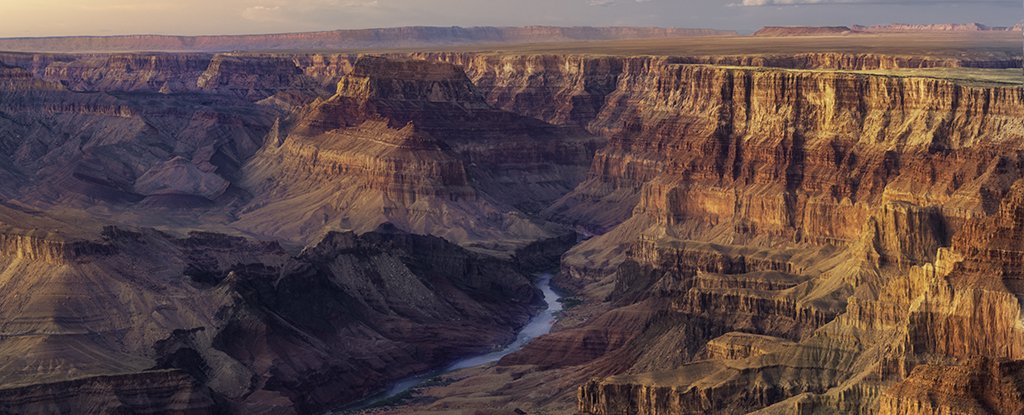
There are few geological mysteries as mysterious as the Grand Canyon's 'Great Unconformity' puzzle. It involves more than a billion years worth of missing layers of rock that were not deposited or stacked as the rest of the geological records. It's almost as if those years have never occurred.
John Wesley Powell, a geologist, first noticed this strange gap in 1869 as he traveled down the Colorado River. These layers would later be dateable. Some rocks are dated to as much as 1.4-1.8 billion year ago, while others are only 520 million years.
Barra Peak, a geologist at the University of Colorado Boulder, says that there are "beautiful lines." "At the bottom you can clearly see that there are rocks which have been pushed together. They are all vertical. There's then a cutoff and these beautiful horizontal layers form the buttes or peaks you associate with Grand Canyon."
Where did all the other rocks go?
Scientists think they may have an explanation for the Grand Canyon's geological history. They suggest that it is more complicated than previously believed and that different areas of the Grand Canyon could have changed over the millennia. This could have caused some sediment and rock to be washed into the ocean.
"We have new analytical techniques in our laboratory that allow us to decipher history in the missing window of the Great Unconformity," Rebecca Flowers, a geologist also from the University of Colorado Boulder.
"We're doing it in the Grand Canyon, and other Great Unconformity locations across North America."
These new methods rely primarily on thermochronology. This is a technique that uses a variety of chemical analysis techniques to determine the heat stored in rocks at the time it formed. This heat is related to the pressure geological formations were subjected to.
Researchers have found evidence that there was a series small but important faulting events that explains the gaps in the geological records. These events would have occurred during the massive breakup of Rodinia's supercontinent, approximately 633 to 775 million years ago. This was a turbulent time for Earth's tectonics and may have led to rock layers not settling in a more uniform manner.
The team analyzed samples and found that the Grand Canyon's western half has undergone very different geologic changes to its eastern counterpart. This is the part tourists are most familiar with.
Peak says, "It's no single block with the exact same temperature history."
The western canyon's basement rock appears to have been deposited 700 million years ago. In the eastern half, however, these same layers of limestone are still under several kilometers of sediment.
Although the findings don't resolve the mystery of the Great Unconformity, they are a step in the right direction. Researchers believe the same techniques could be used at other US sites where similar geologic contortions were observed.
It is clear that the Grand Canyon continues its legacy of inspiring awe, not only in its natural beauty but also because of the way it records the geological history across billions of year.
Peak says, "There are so many things there that you won't find anywhere else." It's an amazing natural laboratory.
Geology published the research.
